8515 Beef Grass Fed Natural Certified Humane
It's no secret that Americans need to cut back on meat. While we now eat more chicken than beef, we still eat too much red meat, especially beef. That's bad news for our health and for the planet. People who eat more red meat—especially processed meat—have a higher risk of colon cancer, heart disease, and stroke.
And it doesn't help that misleading information about meat or poultry can trick even the most careful shoppers. Here's what to watch out for.
Missing labels?
Looking for the Nutrition Facts for fresh meat and poultry?
Unless you're shopping for ground meat or looking at cuts that companies have labeled voluntarily, you're stuck with a brochure or poster that the U.S. Department of Agriculture allows instead of labels on packages.
Can't find the poster? Is it missing the cut of meat you want? You're out of luck.

Didn't know there were Nutrition Facts posters for meat? This may be why.
What's more, the numbers you do find are for 4 oz. of raw meat, which cooks down to a petite 3 oz. Most restaurant steaks weigh in at 6 to 16 oz. raw. If you eat more than 3 oz., you'll have to get out your calculator. (Our chart of nutrition information for some common cuts uses 4 oz. cooked servings.)
Click here to view our chart of nutrition facts for common cuts of meat and poultry.
White meat?
According to scientists, red meat means beef, lamb, veal, and yes, pork...despite decades of ads plugging "The Other White Meat." (Veal is the meat of young cows that have been made virtually anemic, which gives their flesh a lighter color.)
You're better off replacing red meats with chicken, turkey, or seafood.
Lean?
Where do the brochures, posters, and voluntary labels for meat get their numbers? In most cases, from the USDA's database. And where does the USDA gets its numbers? Mostly from, or with funding from, the beef and pork industries. Hmm...
The USDA's database has numbers for beef that has had the fat around its edges trimmed down to just 1/8" or 0". (The pork industry never even says how much its cuts were trimmed.)
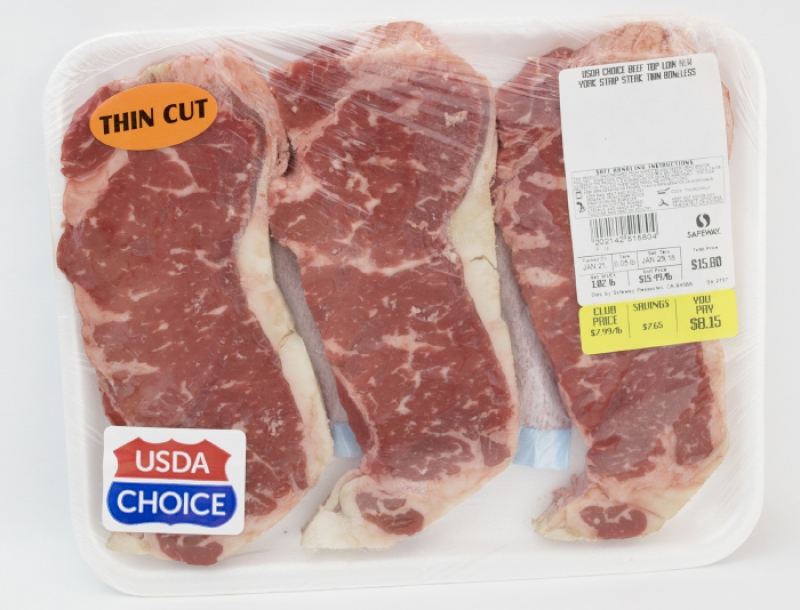
0" trim? Fat chance.
The USDA also has numbers for what's called "separable lean." That's after scalpel-wielding technicians trim off the "separable fat"—every bit of fat except marbling within the muscle.
All that trimming (where do you keep your scalpel?) helps explain how the beef industry's website can end up touting 38 cuts of "lean" beef. The list even includes fatty cuts like New York strip steak and brisket.
Apparently, if you're footing the bill, you get to make the rules.
70 percent lean?
Ground beef that's labeled "70% lean" might sound low in fat. But with 30 percent fat, it's the fattiest ground beef you can buy.
Why don't ground beef labels list only their percent fat? Because also listing percent lean makes the meat sound, well, lean.
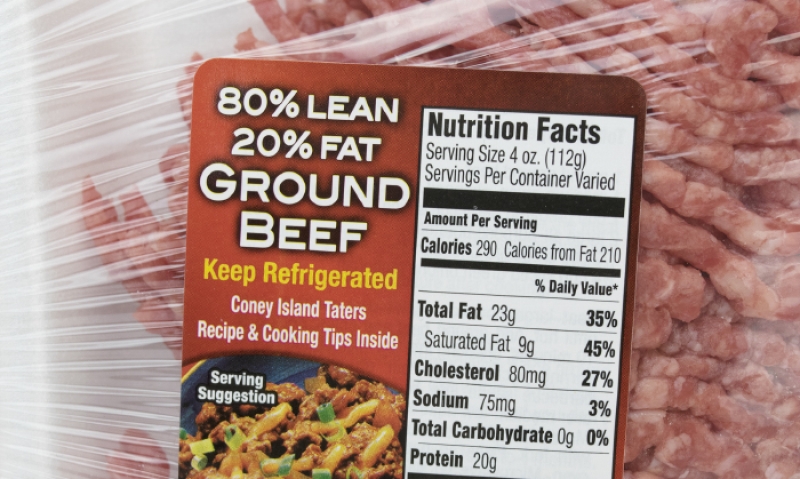
80% lean beef still has half a day's sat fat.
And don't confuse "lean" with "low-fat." "Lean" meat has no more than 4½ grams of saturated fat per 4 oz. (raw) serving. It's no skinless chicken breast. Only "extra lean" meat (2 grams of sat fat, max) is in skinless chicken or turkey territory.
With fish, the more fat, the merrier. Fatty fish, like salmon, are rich in unsaturated (heart-healthy) fat.
No antibiotics?
Using antibiotics to make animals grow faster and prevent disease helps the industry's bottom line. But, over time, it may make those antibiotics useless when people need them to fight off deadly bacteria.
So look for "raised without antibiotics" or "no antibiotics ever" on the label.
Both are stronger than "no growth-promoting antibiotics." The FDA has banned that use, yet the claim appears on turkey sold by Shady Brook Farms and Honeysuckle White. (Both companies still use antibiotics to treat or prevent illness.)
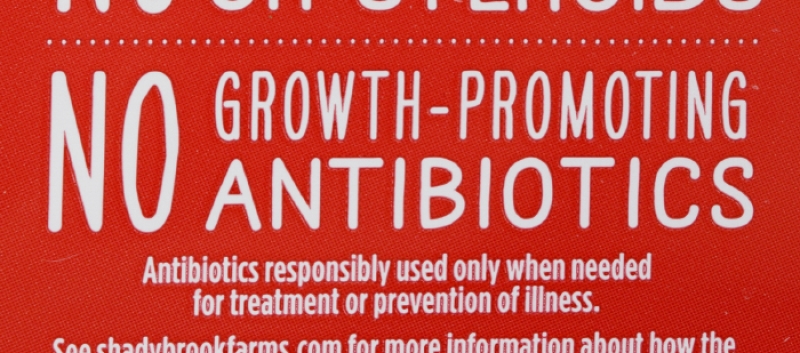
The claim is nothing special. Growth-promoting antibiotics are illegal.
Not all antibiotics claims are independently verified, so look for a USDA Process Verified seal next to the claim ...or buy organic.
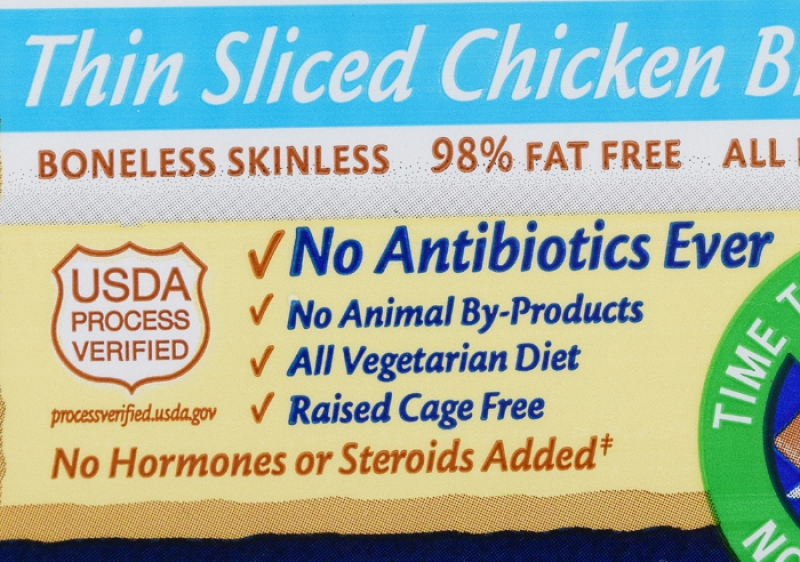
Look for "No antibiotics ever" claims that are "verified" by the USDA.
Organic?
A "USDA Organic" seal means that the animals were given no antibiotics, no hormones, only organic feed (grown without pesticides and not genetically modified), and that they had at least some access to the outdoors. (It doesn't guarantee the strongest animal welfare standards, though.)
Humanely raised?
Claims like "humane" or "humanely raised" may mean that farms don't trim the beaks of poultry and cut the tails of cows and pigs... or they may not. The farms may ensure that animals can go outdoors or that chickens can dust bathe and pigs can root...or they may not. The USDA doesn't inspect farms to check.
To be sure you get humanely raised meat, look for "Certified Humane" or another certified seal. "Animal Welfare Approved" has the strongest standards, so you're more likely to find it at a natural food store or farmers market. Both are stronger than "American Humane Certified," which allows caged hens and crates that don't let nursing pigs turn around, for example.
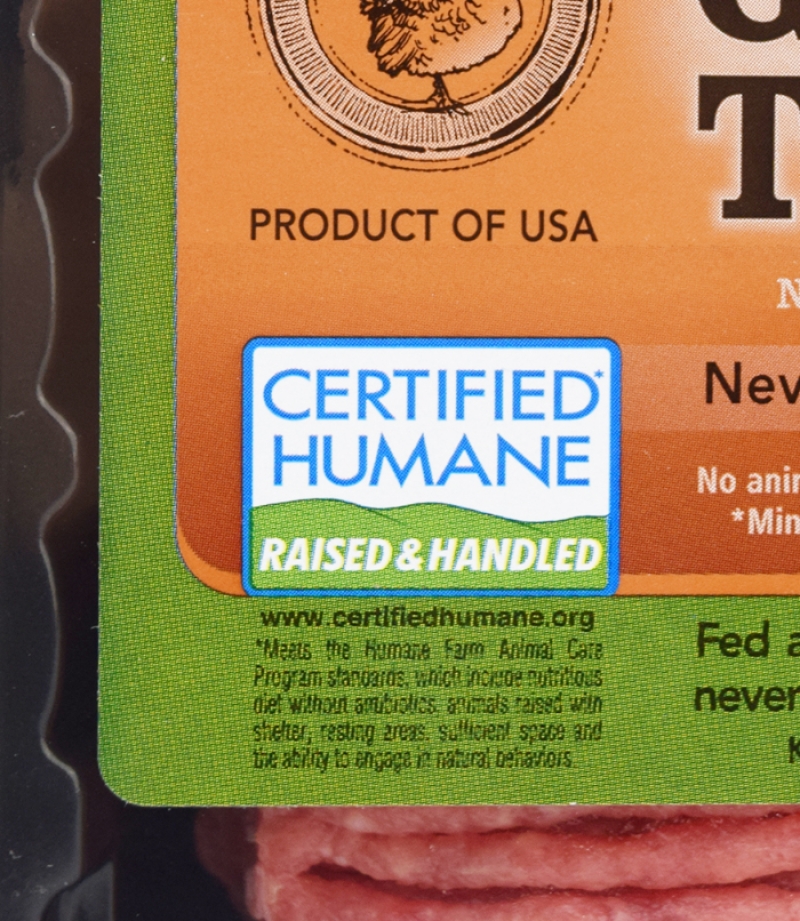
The "Certified Humane" seal is a good bet.
On Whole Foods' and some other meats, you'll see Global Animal Partnership labels, which rate animal welfare practices from Step 1 (slightly better than conventional) to Step 5+ (best).
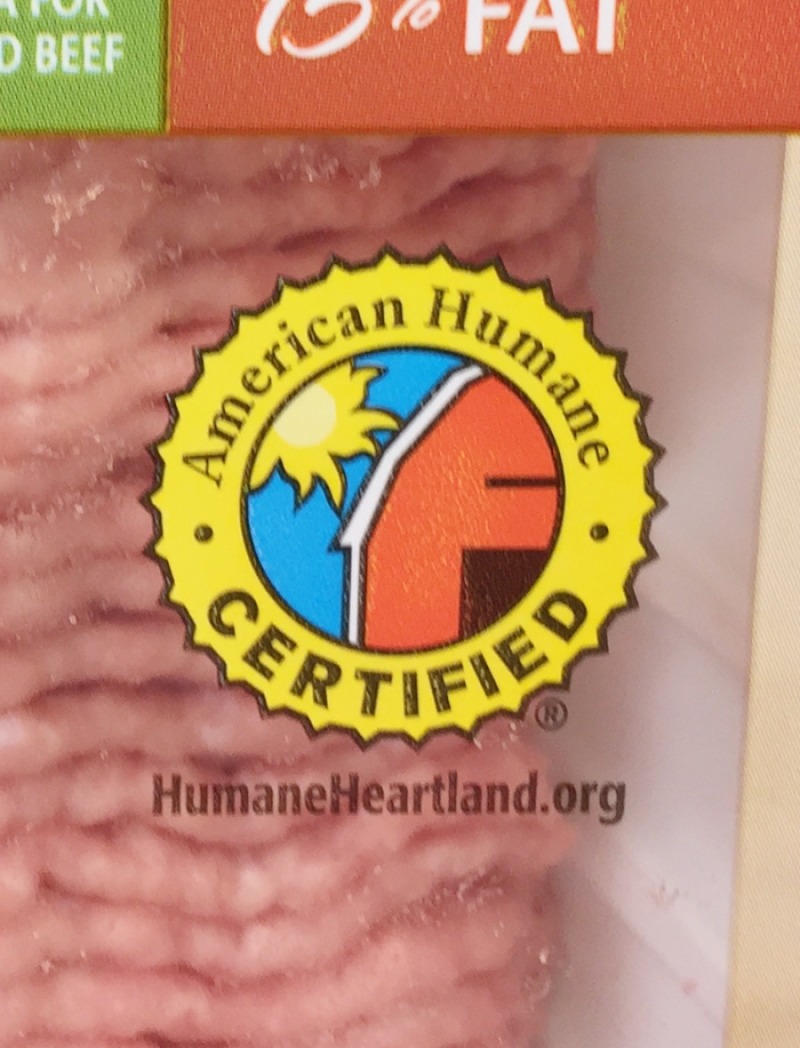
"American Humane Certified" isn't the strongest seal.
Ground chicken or turkey?
"Ground chicken" or "ground turkey" could mean you're getting meat plus fatty skin and who-knows-how-much of the fattier wings or thighs.
Want less fat? Stick with "ground chicken breast" or "ground turkey breast."
Grass-fed?
A verified (independently certified) seal like "American Grassfed" or "Certified Grassfed by AGW" means that the animal had no grain ever and spent its life on pasture. But meat with those seals isn't always easy to find. With unverified grass-fed claims, there are no guarantees.
The cattle may have spent their days grazing in the sunshine...or they may have munched on grass only when they were young. Or dried grass (typically hay) could have been fed to cooped-up animals.
Grass-fed beef typically has (slightly) less fat than grain-fed beef, but that only applies to comparable whole cuts. When meat is ground, whoever is doing the grinding decides how much fat to blend in.
A regular beef patty and a grass-fed beef patty at Chili's, for example, each has roughly three-quarters of a day's saturated fat.
All-natural?
It sounds good but means little. "Natural" meat or poultry has no artificial ingredients or added colors and is no more than "minimally processed."
But "natural" tells you nothing about how the animal was raised, for example, or whether it got antibiotics.
Sustainably raised?
"Sustainably raised" sounds good, but the claim has no official definition.
In fact, beef is a threat to the environment, no matter how it's raised. Producing each serving generates roughly five times more greenhouse gases than producing a serving of poultry and 20 times more than a serving of beans.
What's more, it takes about 1,850 gallons of water to produce each pound of beef—far more than pork (720 gallons per pound) or chicken (520 gallons) or pretty much any other food.
No hormones?
Don't be impressed by "no added hormones" claims on chicken, turkey, and pork. Growers can never treat those animals with hormones. The claim only means something on beef.
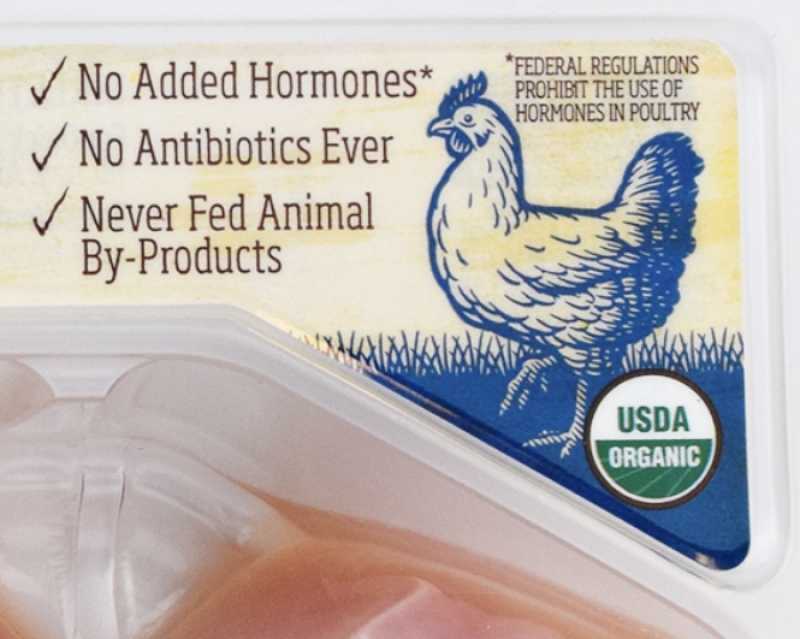
All chicken has "no added hormones."
Photos: Lindsay Moyer/CSPI (American Humane Certified), Jennifer Urban/CSPI (all others). Illustration: © foxysgraphic/fotolia.com.
williamsackelvel60.blogspot.com
Source: https://www.cspinet.org/article/dont-fall-tricky-meat-poultry-claims
0 Response to "8515 Beef Grass Fed Natural Certified Humane"
Postar um comentário